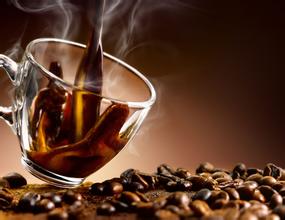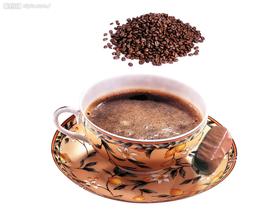Mellow Burundian Coffee Flavor Taste introduction to Fine Coffee in Manor production area
There are many plateaus and mountains in Burundi, most of which are composed of the plateau on the east side of the East African Rift Valley, with an average elevation of 1600 meters above sea level, which is known as the "mountain country". According to the topography, Burundi can be divided into three regions: the western plain, along the Ruzizi River, the Rift Albrtine plain, at 774 to 1000 m above sea level; the central and western mountains, with an average elevation of 1700 m, with the highest peak at Heha in the south-east of Bujumbura, 2670 m above sea level; and the east-central plateau, 1000 to 2000 m above sea level.
Hydrology
Lake Tanganyika is located on the southwest coast of Burundi, covering an area of 32900 square kilometers, with an average water depth of 700m and a maximum depth of 1455 meters. it is the second largest deepwater lake in the world after Lake Baikal in Russia.
Climate
Burundi has a subtropical and tropical climate. The lowlands of Lake Tanganyika, the western river valleys and the eastern part have a savanna climate, while the central and western regions have a tropical mountain climate. [3]
Resources
Burundi mineral deposits are mainly nickel, peat, cerium, tantalum, tin and so on. The nickel deposit is about 300 million tons and the taste is 1.5%. Peat reserves are about 500 million tons. Phosphate reserves 30.5 million tons, taste 11.1-12.6%. The limestone reserves are 2 million tons. Gold deposits are widely distributed, with large reserves in the northwest, and most of them were smuggled abroad in the 1930s. In 1993, forest coverage was 5% of the land area, but it was rapidly reduced to 3% due to fire and deforestation.
Burundi coffee was introduced by Belgian colonists in 1930. Unfortunately, many of these farms are on the border with war-torn Rwanda, putting pressure on coffee production.
Coffee producing areas in Burundi:
Coffee in Burundi is now grown only on small farms. Almost all coffee produced in Burundi is Arabian coffee beans, while coffee trees in Ngozi are planted at an altitude of more than 1200 meters.
Features of Burundian coffee:
Burundi has the most diverse and successful coffee industry in the world, and has its own characteristics. Burundian coffee is fragrant and has excellent acidity.
Flavor: mellow taste, rich aroma, excellent acidity
Suggested baking method: medium to deep baking
★★: good
Burundian coffee market:
Burundian coffee products are mostly exported to the United States, Germany, Finland and Japan for deep-roasted coffee beans suitable for espresso.
The cultivation of Arabica coffee trees in Cameroon (Cameroon) began in 1913 as the Blue Mountain Coffee from Jamaica, but the country also produces large quantities of Robbins coffee. The quality and characteristics of Cameroon coffee is similar to that of coffee from South America. The best coffee in the country comes from Bamileke and Bamoun in the northwest. Here, it also grows some giant coffee beans and bean-shaped berry coffee.
Since the late 1980s, coffee production in Cameroon has declined, from 1.8 million bags in 1987 to 1.1 million bags in 1990, while Arabica coffee has dropped from 400000 bags to 200000 bags in the same period. Today, due to the strengthening of the management of the State Coffee Supervision Bureau (National Coffee Supervisory Agency), the output and quality of coffee may pick up.

Important Notice :
前街咖啡 FrontStreet Coffee has moved to new addredd:
FrontStreet Coffee Address: 315,Donghua East Road,GuangZhou
Tel:020 38364473
- Prev

Vietnamese coffee flavor Vietnamese coffee characteristics
The geographical location in the south is very favorable for coffee cultivation, while the hot and humid tropical climate in southern Vietnam is suitable for growing ROBUSTA coffee and the northern part is suitable for growing ARABICA coffee. Each coffee bean used in the current production of Saigon Coffee is selected from the best coffee area in the Vietnamese plateau and is made of special cream, with outstanding milky aroma, mellow coffee aroma and Saigon coffee.
- Next

Balinese Coffee Flavor
Bali Coffee: known as aristocratic coffee, it is the most classic of French coffee culture. It is very popular both in France and in Europe and around the world. In particular, it is permeated with a strong aristocratic culture, and it is a favorite of coffee lovers. The story of Bali coffee is perhaps one of the most fascinating and romantic stories in coffee history. In 1862, Jin Bihui
Related
- Detailed explanation of Jadeite planting Land in Panamanian Jadeite Manor introduction to the grading system of Jadeite competitive bidding, Red bid, Green bid and Rose Summer
- Story of Coffee planting in Brenka region of Costa Rica Stonehenge Manor anaerobic heavy honey treatment of flavor mouth
- What's on the barrel of Blue Mountain Coffee beans?
- Can American coffee also pull flowers? How to use hot American style to pull out a good-looking pattern?
- Can you make a cold extract with coffee beans? What is the right proportion for cold-extracted coffee formula?
- Indonesian PWN Gold Mandrine Coffee Origin Features Flavor How to Chong? Mandolin coffee is American.
- A brief introduction to the flavor characteristics of Brazilian yellow bourbon coffee beans
- What is the effect of different water quality on the flavor of cold-extracted coffee? What kind of water is best for brewing coffee?
- Why do you think of Rose Summer whenever you mention Panamanian coffee?
- Introduction to the characteristics of authentic blue mountain coffee bean producing areas? What is the CIB Coffee Authority in Jamaica?

